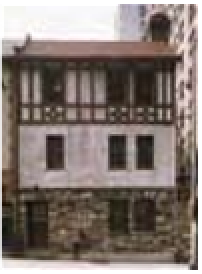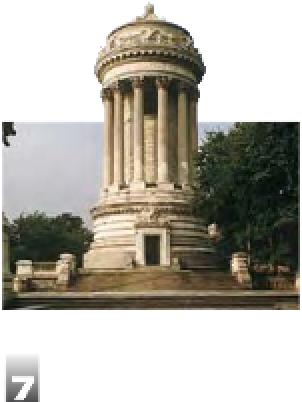Travel Reference
In-Depth Information
Pomander Walk
This double row of small
brick and stucco, timbered,
Tudoresque townhouses, hidden
on a private street, is one of the
many delightful surprises to be
discovered in Manhattan. The
developer, a restaurateur named
Thomas Healy, took his inspira-
tion in 1921 from the sets used
for a popular play by Lewis
Parker called
Pomander Walk
,
hoping to recreate the village
atmosphere depicted in the play.
Gloria Swanson, Rosalind Russell,
and Humphrey Bogart are among
the players who have lived here.
d
261-7 West 94th Street, between
Broadway & West End Av
•
Map E2
Soldiers' and Sailors' monument
Riverside Drive/
West End Historic District
A walk through this area shows
the late 19th-century townhouses
that characterize the Upper West
Side. West 88th Street is a good
example. The earliest, Nos.
267-71, were built in 1884. Nos.
302-38, from the early 1890s,
have stepped gables and
Roman brick, while Nos. 315-
23, circa 1896, have bow fronts
in brown or white stone. The
Yeshiva Ketana School, at 346
West 89th Street, begun in 1901
by Herts and Tallant, occupies
one of only two survivors of
the mansions that once lined
Riverside Drive.
d
Between
Riverside Drive & West End Av, 85th &
95th sts
•
Map E1
Riverside Park
Another example of the
landscape genius of Frederick
Law Olmsted, a woodsy, hilly
band of green planned in 1873,
following curving Riverside Drive
for 70 blocks and hiding the
abandoned railroad tracks below.
Playgrounds, sports fields, a
promenade, and monuments
were added later. The impressive
1902 marble Soldiers' and
Sailors' monument at 89th
Street, a memorial to those
who died in the Civil War, was
modeled after the Monument
of Lysicrates in Athens.
d
Riverside Drive, 72nd to 155th sts
•
Map C1
•
Open 6am-1am daily
•
Free
Children's Museum
of Manhattan
Founded in 1973, in a former
school building, this is a museum
dedicated to the principal that
children learn best through
Upper West Side
Architecture
The Upper West Side's side streets are
lined with fine rows of the brownstones
favored by New York's 19th-century
middle classes. Built of inexpensive,
local, brown sandstone, the narrow
buildings are typically three or four stories
high, and have a flight of steps called a
“stoop” leading to the living floors.
Left
House façade, Pomander Walk
140











